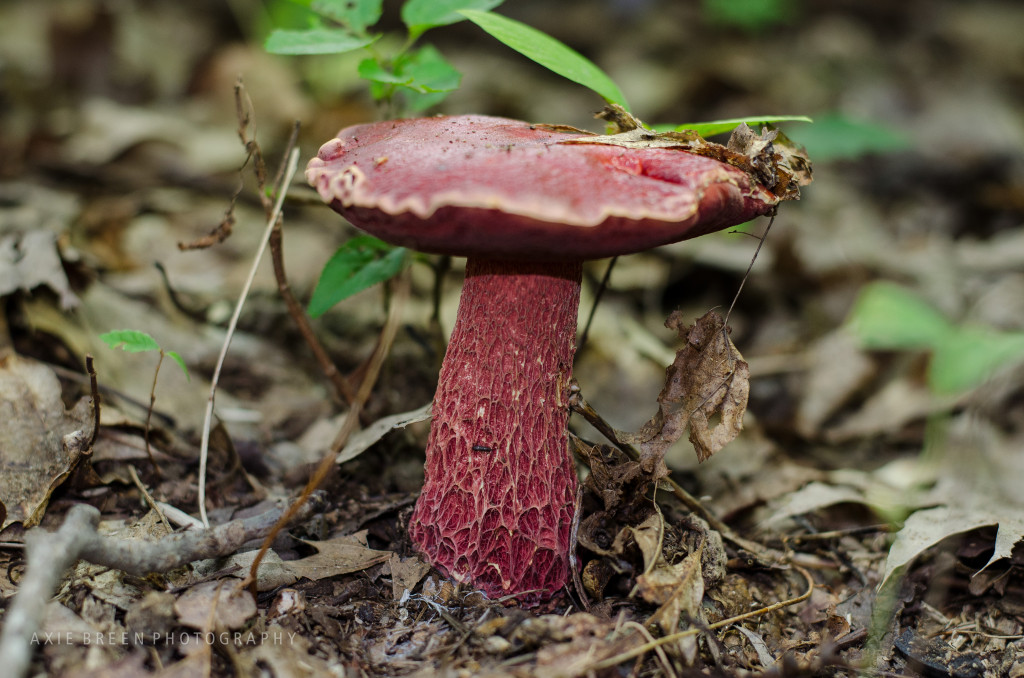 A very distinctive mushroom because the whole thing is dark red, it’s pretty big, and it has this internal-organ looking stem. In Mexico, the common name is panza agria, meaning “sour belly”.
A very distinctive mushroom because the whole thing is dark red, it’s pretty big, and it has this internal-organ looking stem. In Mexico, the common name is panza agria, meaning “sour belly”.
Frost’s Bolete, Apple Bolete (Exsudoporus frostii)

This year, we had a double puffball event in our yard. When I noticed them they were smaller than baseballs and then were visibly larger every day. Finally B picked one and ate it, after a brief “Alas, poor Yorick” moment, and then there was one. Last photo with a slice removed, to show its solid interior, with the slice like a piece of soft cheese or a delicate wedge of memoryfoam pillow.
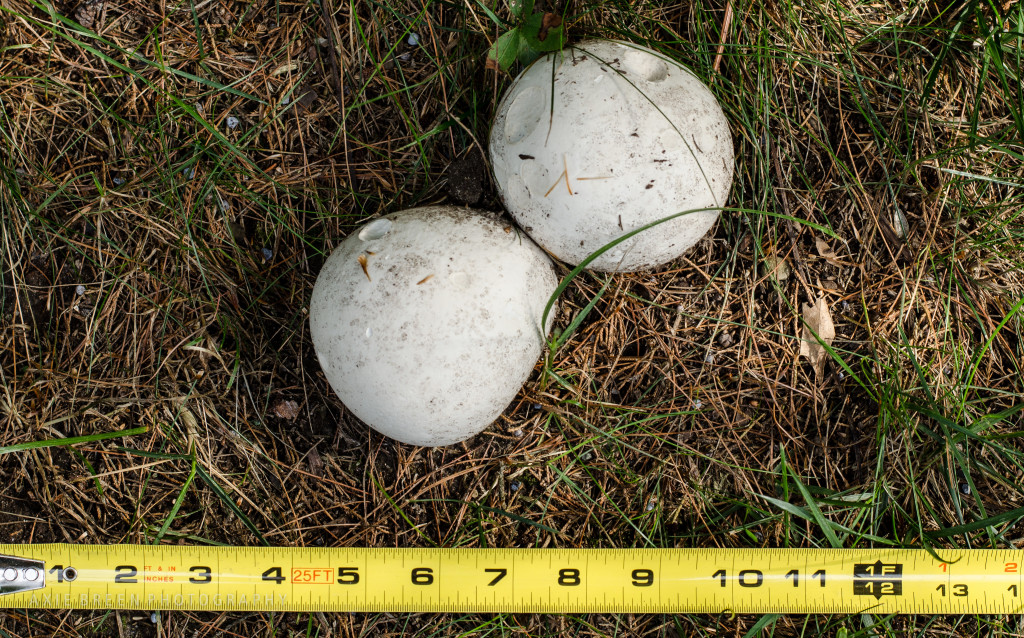
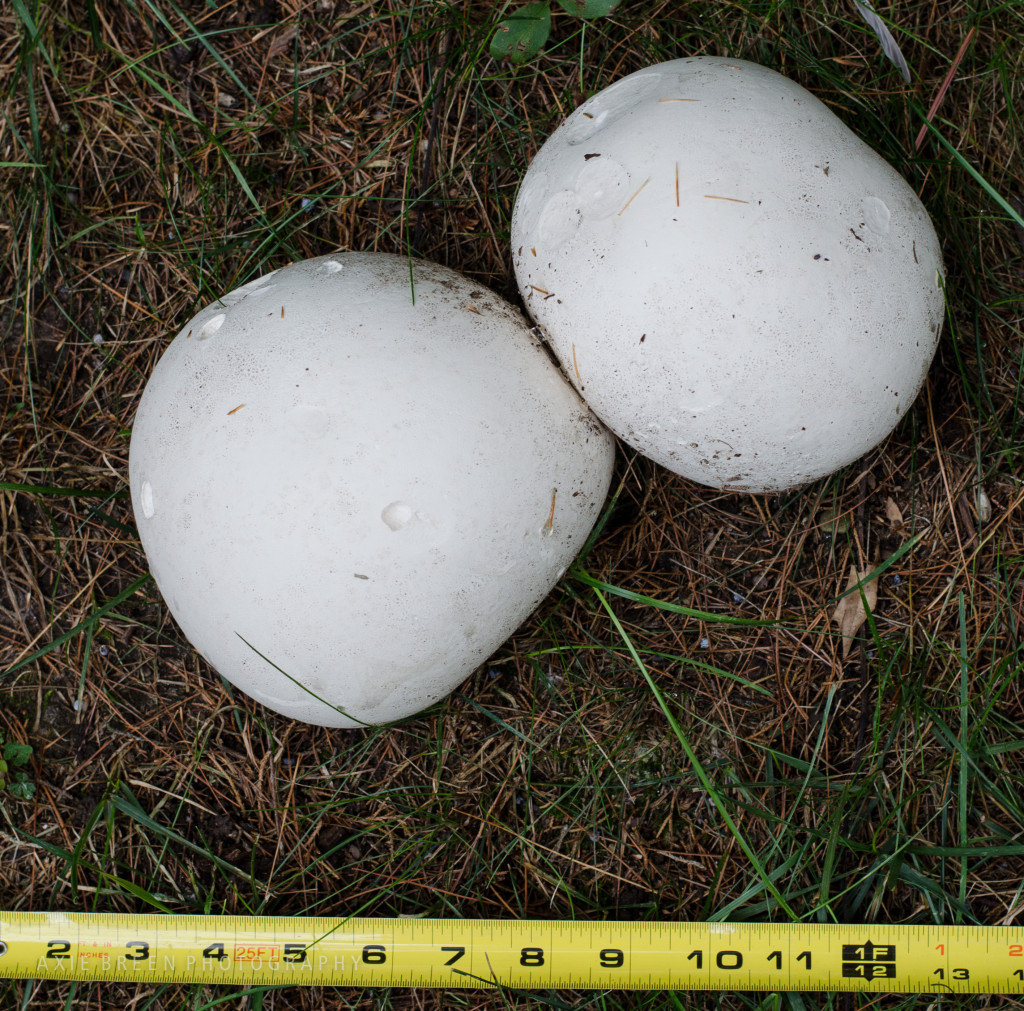
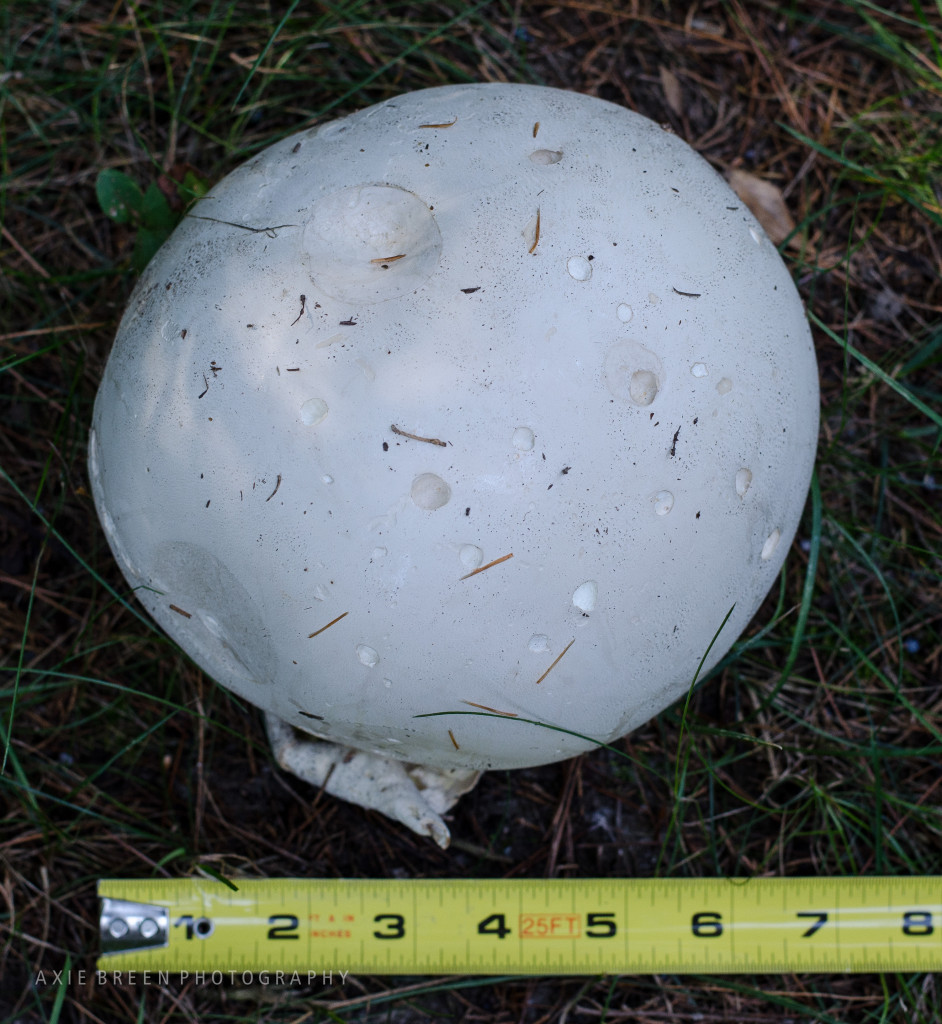
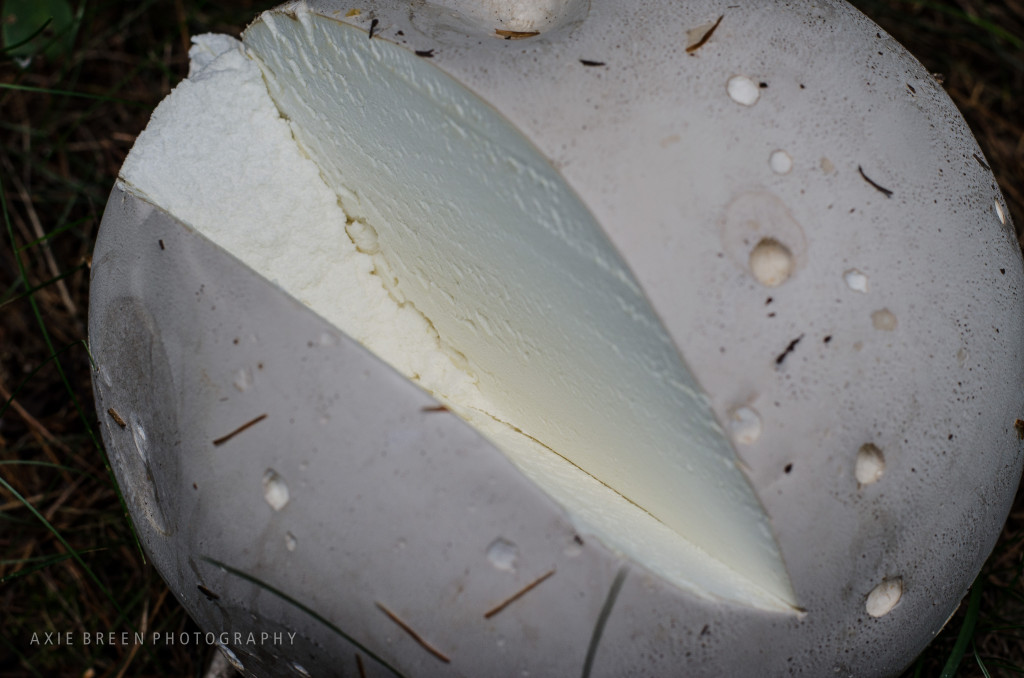 Found in temperate regions worldwide.
Found in temperate regions worldwide.
Giant Puffball (Calvatia gigantea)
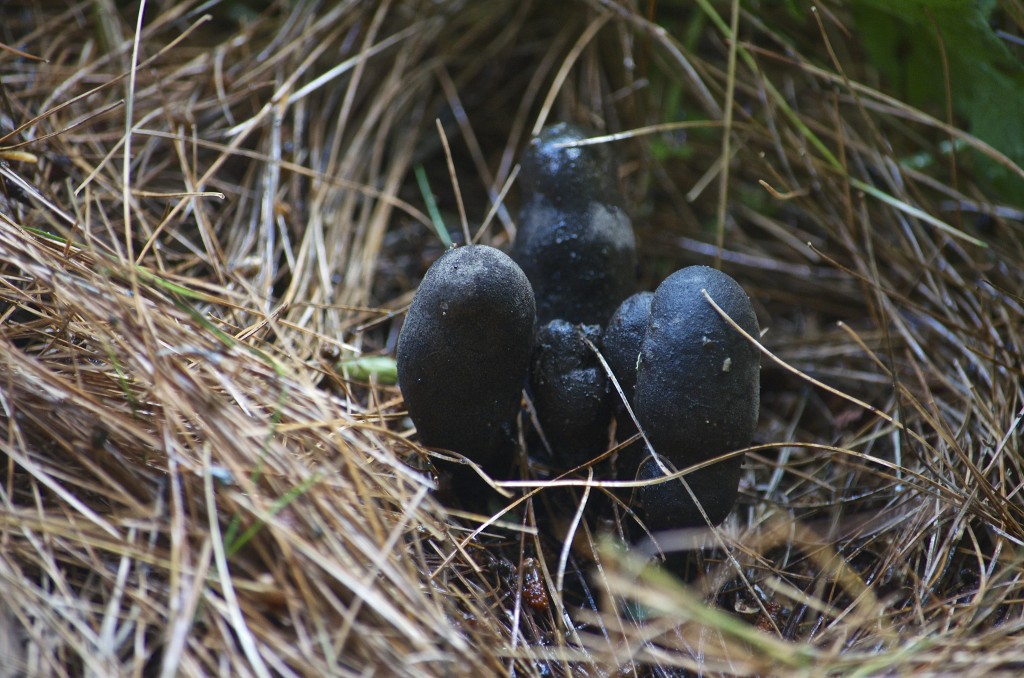 Look at this bizarre little fungus, like black sausages standing on end. In spring, they’re covered with a white powder (the spores). Part of the latin name, polymorpha, means it can take many forms, but it’s often in this club shape. Belongs to the same class of fungus as morels and truffles, but these are inedible. Common to eastern North America.
Look at this bizarre little fungus, like black sausages standing on end. In spring, they’re covered with a white powder (the spores). Part of the latin name, polymorpha, means it can take many forms, but it’s often in this club shape. Belongs to the same class of fungus as morels and truffles, but these are inedible. Common to eastern North America.
Dead Man’s Fingers (Xylaria polymorpha)
I’m new to identifying mushrooms, but apparently this is a poisonous mushroom that causes death by liver failure from eating just one. Identifying features: has a smooth white cap (sometimes with a tan tint in the center, like this one), gills, and a drapy skirt-like ring near the cap. The first stage of poisoning is called the incubation stage: 6-12 hours with no symptoms while it takes over without you noticing. Don’t eat white mushrooms!
Eastern North American Destroying Angel, Deadly Amanita, White Death Cap, Angel of Death (Amanita bisporigera)